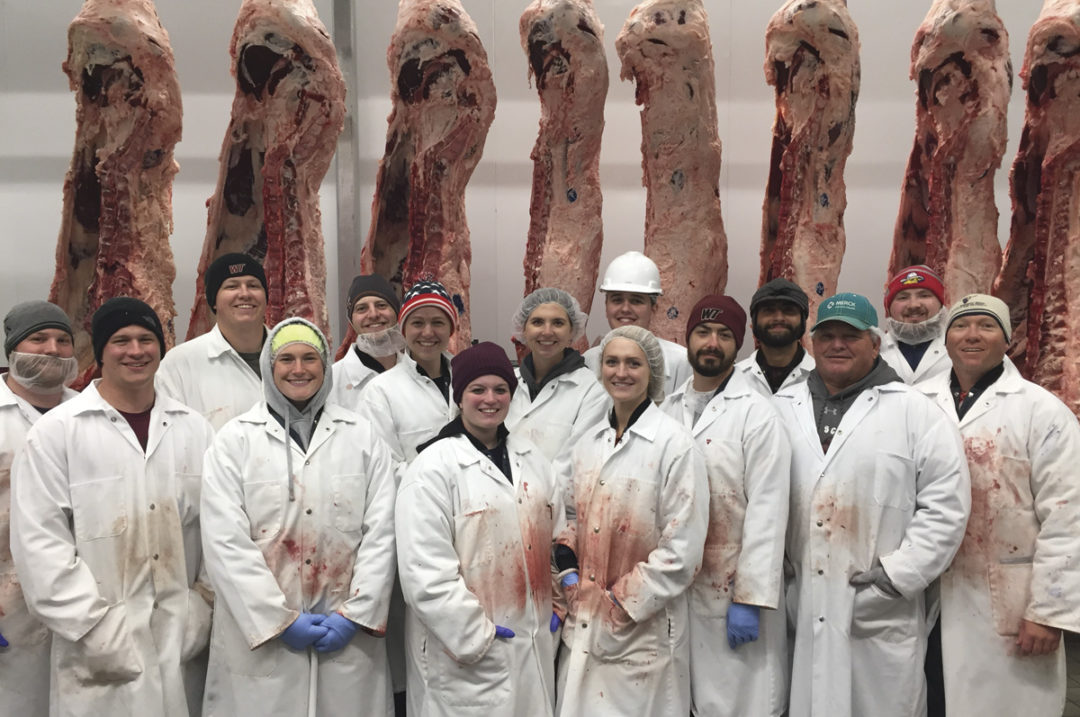Profit at harvest is of foremost importance to producers. Producers who market cattle on a live basis are driven by finished bodyweight, whereas those who market cattle on a grid are concerned with premiums and discounts, as well as hot carcass weight. While there are many avenues available for producers to market their cattle, it is important for producers to decide what type of marketing strategy and production plan best fits their operation.
More than 92% of cattle receive a growth-promoting implant during finishing, subsequently enhancing animal value and reducing production costs by 6.5%. This reduction in costs is a direct result of a 16% to 20% improvement in average daily gain and enhanced gain to feed efficiency by up to 27% in finishing cattle. Even at the stocker and calfhood stages, implants can increase average daily gain (ADG) as much as 16% and 7%, respectively, compared to non-implanted cohorts. The increase in productivity and reduction in costs associated with implant administration is a direct benefit to the producer and has been widely utilized for the last 60 years of beef production.
Conversely, non-hormone-treated cattle (NHTC) products have gained popularity with consumers in recent years, and more producers have begun to incorporate these programs into their herds. Cattle in a NHTC program simply do not receive exogenous hormones, such as those contained in a growth-promoting implant. Although these animals only made up 0.5% of the fed cattle in 2011, the presence of NHTC cattle in the marketplace increased more than 450% in the following seven years. Cattle in this program often require increased input costs to reach a similar finished endpoint to their implanted counterparts, but are eligible for up to a 4% premium when marketed as feeder and stocker calves, and finished cattle sold on a grid basis can bring an additional $20 per hundredweight (cwt).
Researchers in the Texas Panhandle designed a trial to test the overall profitability of implanted or NHTC steers over 378 days from 600 to 1,800 pounds. All 80 steers in this study were received from the same source, were predominantly Charolais-Angus and were paired within similar sires, estimated final bodyweight, frame score and days to target bodyweight. Within pairs, steers were randomly assigned to receive (IMP) or not receive (NHTC) a Revalor-XS implant at day 0 and day 200. Pairs were randomly assigned to harvest date at 42-day intervals (day 0, 42, 84, 126, 168, 210, 252, 294, 336, 378) for a total of eight steers, or four pairs, per harvest date. Researchers collected information on live, carcass, sensory and economic performance. At the time of this article, peer-reviewed articles of these results have not yet been published; however, the knowledge gained from this experiment is currently useful for the beef industry.
 This is one pen of the Charolais-Angus steers used on the study during the acclimation period. Photo by Tylo Kirkpatrick.
This is one pen of the Charolais-Angus steers used on the study during the acclimation period. Photo by Tylo Kirkpatrick.
When all treatments were fed a similar diet and commingled in pens together, there was a 10% improvement in ADG for the implanted steers and decreased for all steers across the 378-day trial. Likewise, feed efficiency was improved 7% for implanted cattle compared to NHTC and was depressed the longer cattle were on feed. There were no treatment differences in dry matter intake as a percentage of bodyweight, but intake did decrease over time. Final bodyweight was increased 9% for implanted steers at the end of the study.
How does this information apply to producers?
To start at the beginning, ADG is a marker of how much an animal is gaining each day; therefore, a 10% improvement in ADG is a huge benefit and could mean fewer days on feed to reach a target weight. However, if an animal is gaining more each day but also eating more feed, this could be less beneficial on production costs, but in this case, there was no difference in dry matter intake. Which brings us to feed efficiency, a value that describes how efficiently an animal is converting the feed it eats to weight on the live animal, and these data would imply implanted steers are 7% more efficient at converting feed to pounds than NHTC. Lastly, but most important for producers marketing live cattle, final bodyweight tells producers how much they will be paid for their cattle, and the more the merrier. In this study, implanted steers brought 6% greater income back to the producer than NHTC steers sold on a live basis.
All of the live data presented above points to the use of growth-promoting implants as the best option, and that is true, for cattle sold on the live basis. In the case of the NHTC group, these live animals do not commonly receive any kind of premium for being non-hormone treated; however, their carcasses do. So, if you plan to sell your finished cattle through live marketing methods, you should strongly consider using growth-promoting implants and consult your local expert to create an implant program that best fits your operation and goals.
 Data collection on all live animals includes bodyweight, measurements and ultrasounds. Photo by Wade Nichols.
Data collection on all live animals includes bodyweight, measurements and ultrasounds. Photo by Wade Nichols.
What about producers who market cattle on the grid?
Although the costs associated with producing an animal are the same for both live and grid marketing channels, the income is calculated far differently. When producers talk about marketing cattle on the grid, they are discussing a program that pays them premiums and discounts from a base price determined by carcass quality and yield characteristics in addition to specialty programs such as NHTC or Certified Angus Beef. The base price is adjusted according to these factors, and producers are paid the base price multiplied by the hot carcass weight of their animals.
In this study, researchers utilized the average grid prices during the time the study occurred, from August 2018 to October 2019, to avoid any kind of seasonality associated with figures from a single time point. Hot carcass weight increased 6% for implanted steers compared to NHTC, which directly increased the pounds for which producers would be paid. Yield grade and quality grade were also similar for the two treatments, indicating there would be no differences in adjustments to premiums or discounts on that front. However, NHTC steers qualified for a $20.16 per cwt premium, where the implanted steers did not. In the end, the base price was 14% greater for the NHTC steers, and when weight was considered, the additional weight of the implanted steer carcasses could not overcome the additional revenue from the NHTC program, and the average NHTC carcass returned 7% greater income to the producer.
How do days on feed pencil out on paper for an animal marketed on the grid?
There are several factors to consider here, the most important being weight, quality and yield grade. Heavy carcass and yield grade discounts are the biggest fear for cattle fed extended days on feed, while the potential for quality grade premiums becomes more attractive. In this study, the ideal marketing time point was at 210 days on feed with a 945-pound carcass that graded low Choice and had a 3.4 Yield Grade. However, each operation should review their records to create a time point or weight that best reflects their unique goals.
Given the above findings, researchers suggest utilizing growth-promoting implant technologies for cattle marketed live and taking advantage of branded programs such as NHTC that may benefit grid-based marketing schemes. However, it is important to first secure a marketing outlet that will pay a premium for these specialty programs, such as NHTC, or the additional premiums described for this program are easily lost. At the end of the day, every operation is unique and should consider production and marketing plans that best fit their operation and goals.









